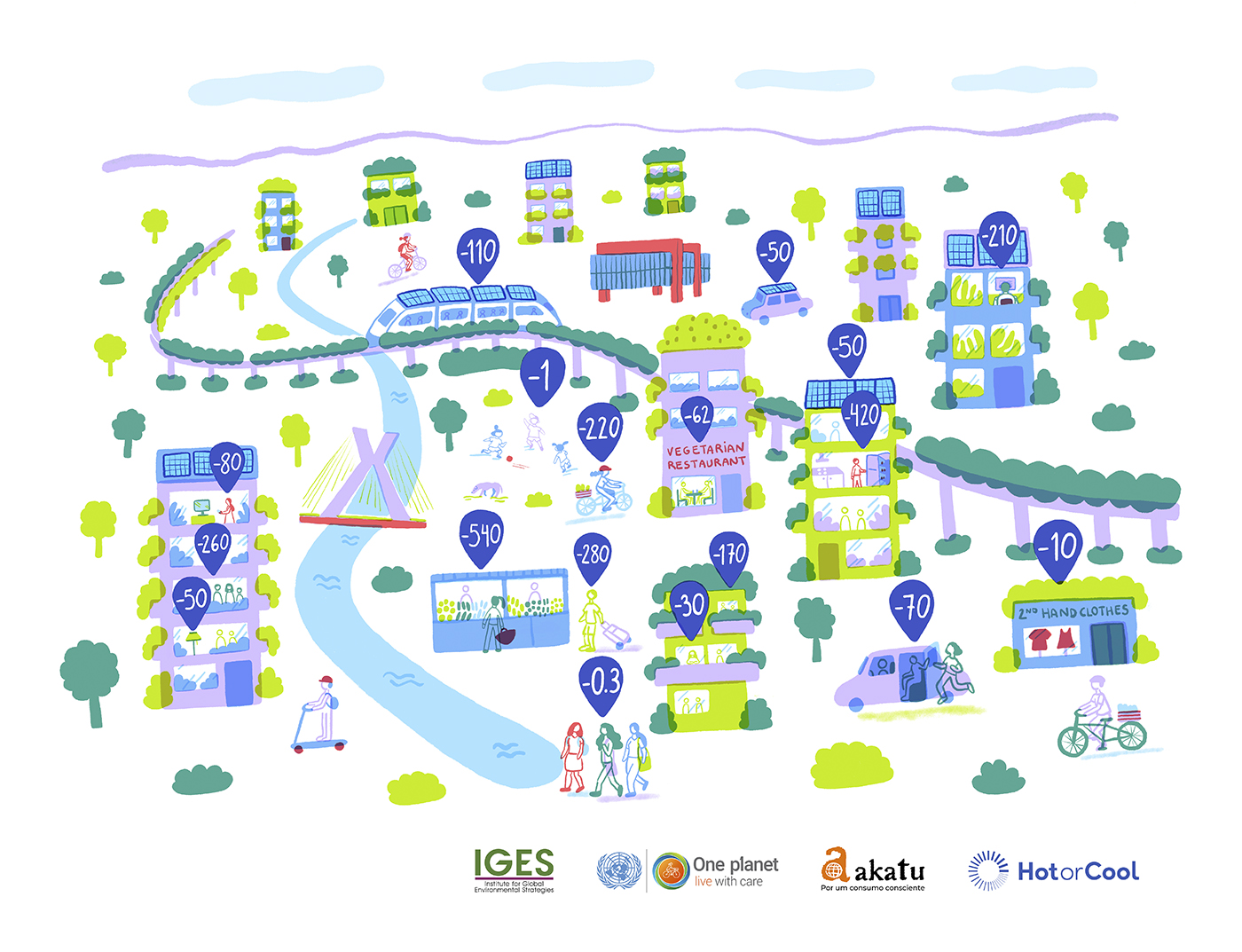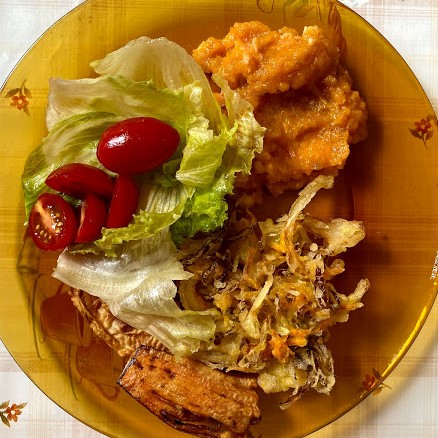São Paulo
In São Paulo the participants were asked how easy or difficult the different lifestyle options are to adopt. Avoiding and reducing food waste, house sharing, turning off lights when not in use, switching to LED lighting, and reducing TV time are among the options that were seen as very easy to adopt. Avoiding excessive packaging, substituting meat with low carbon protein, and avoiding car use are among the option that were less easy to adopt. The more difficult options according to the participants are: reducing meat and dairy consumption, repair items instead of buying new, choosing a vegan/vegetarian diet and bicycle use.
Read more about the São Paulo vision in the city brief.

Low-carbon protein
instead of red meat
(poultry, fish):
-540kg CO₂e/cap/yr
Plan food shopping to
avoid waste: -280kg
CO₂e/cap/yr
Reuse food leftovers:
-420kg CO₂e/cap/yr
Vegetarian restaurant:
-62 CO₂e/cap/yr
Solar panels in homes:
-50kg CO₂e/cap/yr
Sharing of housing
space: -260kg
CO₂e/cap/yr
Reduce home
electricity use (inc.
monitoring, peak
management): -80kg
CO₂e/cap/yr
LED lighting: -50kg
CO₂e/cap/yr
Living in smaller homes:
-170kg CO₂e/cap/yr
More natural
lights/big windows:
-30kg CO₂e/cap/yr
Using public transport
(reduction of car use):
-110kg CO₂e/cap/yr
Ridesharing: -70kg
CO₂e/cap/yr
Home office:
-210kg CO₂e/cap/yr
Using bikes:
-220kg CO₂e/cap/yr
Eco-driving:
-50kg CO₂e/cap/yr
Making clothes
last longer: -10kg
CO₂e/cap/yr
Reduction in
electronics consumption:
-1kg CO₂e/cap/yr
Prefer alternatives to
disposable pads/tampons:
-0.3kg CO₂e/cap/yr
Illustration by Tania Vicedo
I liked being part of the experiment, as I could better observe my lifestyle based on my habits, valuing the actions I already practice and finding opportunities for changes in some other habits.
In São Paulo the participants expressed content with the household experiments in that they found ways of calculating and building upon their understanding of sustainable lifestyle choices. The experiments were a way of self-evaluation that brought to the attention of the participants how they can change habits and choose more low-carbon intense lifestyle options – and still live a healthy and happy life.
Even though barriers were found in some of the lifestyle options, the participants were positive the citizens’ approach has potential to reducing the city’s overall carbon emissions.


In my perception, the experiment was really important because it made me stop and reflect about my habits, behaviors and their impacts on our planet. We usually think we know about them and that changing about it is really hard, but the fact is that we don't know much about our real impacts if we don't try to better understand them, and we can do a lot with little effort. That is a big motivation to change our routine towards a low carbon lifestyle and I'll intend to make that change!
When asked how easy or difficult the different lifestyle options are to adopt the participants thought avoiding and reducing food waste, house sharing, turning off lights when not in use, switching to LED lighting, and reducing TV time are among the options that were seen as very easy to adopt. Avoiding excessive packaging, substituting meat with low carbon protein, and avoiding car use are among the option that were less easy to adopt. The more difficult options according to the participants are: reducing meat and dairy consumption, repair items instead of buying new, choosing a vegan/vegetarian diet and bicycle use.

Describing my routine has brought me the consciousness that even though it may seems that small attitudes are limited, considering a global issue as the climate crisis, when they are combined to others and practiced constantly, we may induce a huge difference and contribute to a more sustainable future.






